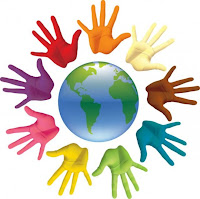We are a nation of many skin colors, religions, types of
family units, economic levels, languages, physical and mental abilities,
political persuasions, ethnicities, and customs. It is important that young
people learn to understand those who may not look, act, or think the same as
they do. That does not mean that they always need to agree with those who are
different, but it also doesn’t mean that they should belittle or bully people
who are not the same. Instead, kids need to discover what they can learn from
one another. By expecting tolerance at home and at school, we develop
environments where young people feel safe and appreciated. We also broaden
their exposure and appreciation for different cultures and ideas which, in
turn, enhances general learning.
There are some excellent websites that help both parents and
educators teach kids tolerance. Here are a few.
- Teaching Your Child Tolerance—Explains to parents why their own discomfort with the subject of tolerance should not get in the way, why tolerance is important, and how it can be taught at home.
- Teaching Tolerance—A wealth of information is provided to use with students of all ages. The website includes lesson plans, tips for the classroom, articles, and other resources.
- RaceBridges for Schools—This website provides numerous lesson plans, videos, theatre games, and other resources that assist adults and students to reflect, talk, and act about diversity, inclusion, and race relations.

No comments:
Post a Comment
Your comments will be available after approval.